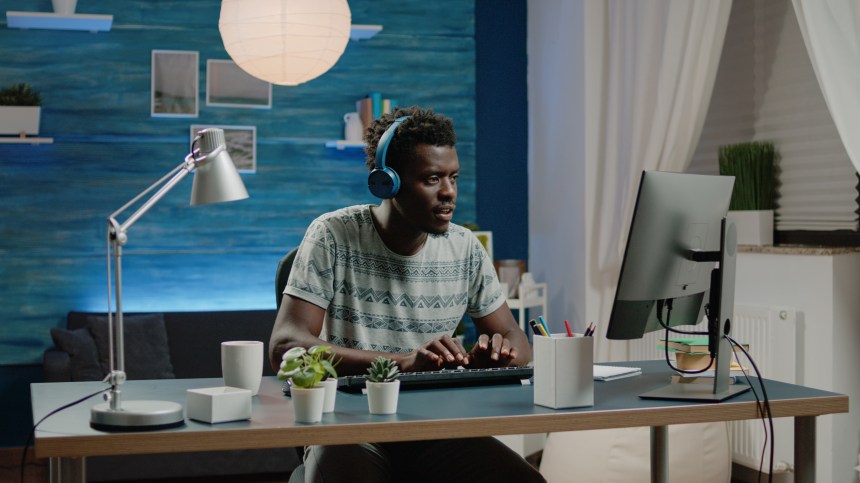Since a huge chunk of the workforce has shifted to remote work, webinars have become increasingly popular. More than just an option for convenience, the online seminar has now become the norm. However, keeping your virtual audience engaged can take time and effort, unlike face-to-face events, where you can personally interact with your listeners.
Why Should Your Webinar Be Interactive?
The truth is webinars can get boring pretty quickly. They can easily get distracted without the ability to look your audience in the eye. After all, without the incentive of dressing up or being seen by others, attendees may have little desire to pay attention.
Before webinars became the norm, a massive draw of attending seminars and events was the opportunity to make connections—you can recreate that feeling virtually. Interactive webinars won’t just encourage attendees to focus but also increase engagement and the chance of conversion (if applicable).
How to Design an Interactive Webinar?
1. Prioritize Questions
A question-and-answer portion is the simplest way to add an interactive element to your webinar. But to go beyond allotting some time for Q&A, it’s essential to consider using software that makes it easier for your audience to ask questions.
Software like Mentimeter or Slido has specific features that allow your audience to ask questions that will be flashed during relevant parts of your webinar. If you have a big audience, features that enable you to moderate and screen questions before they’re flashed on the screen will be helpful.
Enlisting software to assist you in your Q&A session is especially valuable because it can boost engagement. Remember that not all audience members will be comfortable speaking up in a public forum. The option to type questions down anonymously will increase your chances of receiving more questions.
Pro-tip: Try to answer questions as they come in. While you don’t have to stop mid-sentence, answering questions in real-time will encourage audience participation.
Before the day of your webinar, allowing those who signed up to submit their questions would be a great idea. This ensures they’re engaged and committed to the event even before it begins. Learning more about your audience before the day of your presentation will also help you tailor your content to their needs.
Don’t forget your audience shouldn’t be the only ones asking the questions. As the host of the webinar, it would be beneficial to make it seem like a conversation rather than a one-sided speech. This way, your audience is kept on their toes and encouraged to listen and speak up.
2. Post live polls and games
The challenge of any webinar is being able to connect with each of your audience members. One quick solution is through interactive polls and games. The above tools allow you to create polls and post the results on screen in real time.
Polls are incredibly useful because they’re a quick way to get the pulse of your audience and encourage them to participate. Gamifying portions of your webinar is a fun technique to get your audience to listen and retain information.
FinancesOnline found that 85% of employees show more engagement when gamification is applied to their training programs, with only 3% remaining unproductive during a gamified session.
When introducing new topics, you can make it more fun and engage with the help of popular tools like Kahoot!. Gamifying lessons and complex topics can help incentivize your audience to pay more attention during discussions.
Games can include multiple-choice questions, puzzles, and other trivia contests. Flashing a virtual leaderboard on the screen will encourage your audience to stay engaged and competitive. If possible, increase the stakes by rewarding winners with prizes.
Pro-tip: Use games to break up different segments and evaluate what your audience has learned. This will help you gauge if they’ve been listening and wake them up in case they’ve gotten distracted or bored.
Want to design an interactive webinar that leave a lasting impression to your audience?
Contact Growth Hackers
3. Always include visuals
Sixty-five percent of people are visual learners. Supplement your talk points with visuals to encourage your audience to keep their eyes on the screen. And don’t just stop with photos. Consider using infographics, graphs, and of course, videos.
A presentation isn’t complete without visuals. In particular, video can help increase conversion by 80%. So, if you want your audience to convert by the end of your webinar, you know what to do.
Eye-catching content will always perform better. If you can’t do graphic design, many templates are available online to help you design your webinar presentation from start to finish.
4. Share personal stories and anecdotes
Adding personal stories is a powerful way to connect with your audience on a deeper level and keep them engaged. It doesn’t even have to be too personal—keep it relevant to the topic.
For example, if you’re hosting a webinar to teach people about something technical, you can share how you became an expert in your field, how you started, and the difficulties you faced. This will instantly make you more relatable.
5. Don’t ignore the chatbox
Instant messaging is perhaps the most used form of communication today. In a webinar setting, that would be the chatbox. So, no matter what platform you choose to host your webinar, make sure you enable the chatbox.
Before you begin, encourage interaction through the chatbox—be the first to send a message! If subscribing to tools to boost your Q&A session isn’t an option, the chatbox is good enough to host it.
Pro-tip: If you verbally ask a question, repeat it in the chatbox. This will encourage participation.
You can also use the chatbox as a tool to host mini-games. For example, you can ask a trivia question, and the first one to type down and send their answers through the chatbox wins.
6. Play with backgrounds
Virtual backgrounds have been a valuable tool to make online meetings more fun and engaging. Use that to your advantage for your webinar.
You can design a custom background for everyone during the webinar or use it as an icebreaker. For example, you can ask participants to change their backgrounds as a creative way to introduce themselves. If applicable to your topic, you can also change your background to reflect the subject you’re talking about.
7. Break participants up into smaller groups
Unless you’re a professional entertainer, holding your audience’s attention for an hour or more won’t be easy. Allowing your audience to break out into smaller groups for discussions and interactive activities will keep them from dozing off or getting distracted during the webinar.
Tools like Zoom, MS Teams, and Google Meet have breakout rooms that allow you to create small groups where they can collaborate in a separate space. This is especially useful if you have activities that require teamwork.
Breakout rooms are also a great way to simulate in-person networking activities, which is part of what draws people to attend seminars. Allowing your audience to work together will be a nice change from webinars that usually focus on the speaker.
Pro-tip: Assign a leader or facilitator who can set clear goals per breakout room. Don’t assume that someone will take the initiative. Otherwise, some groups may get stuck in awkward silence throughout the activity.
Unlock the secrets to designing interactive webinars that leave a lasting impact!
8. Have short breaks
No matter how charismatic or exciting your topic is, staring at a computer for more than an hour can get tiring. Allot time for short breaks between topics to allow your audience to stretch their legs and do other things. This will help everyone recharge and focus for the remainder of the webinar.
You can also have short break time activities like mini-games and even stretching sessions.
9. Add music
Using the right music can boost productivity and focus. You can also use different types of music to fill out webinar segments. For example, upbeat music can build excitement during games, while ambient music can help fill awkward silences during small group discussions.
Music has the power to improve people’s moods. So, if you need to keep your audience energized throughout your webinar, a great playlist can help you.
10. Surprise them
Your audience must know what to expect during the webinar, especially if they signed up for it themselves. Chances are, you’ve already posted a “what to expect” outline on your page. While you’ll have to keep to your general outline, don’t be afraid to sprinkle elements of surprise throughout your webinar.
Surprises don’t have to be big. You can invite a guest speaker to take over one webinar segment, host a small raffle, or even insert a couple of memes or jokes during your presentation to keep your audience entertained.
Summing Up How to Design an Interactive Webinar
All successful events have one thing in common—they’re engaging. While the thought of engaging a virtual audience might seem daunting, with the help of a few tools, eye-catching visuals, and some elements of surprise, you’ll be sure to keep your audience engaged from start to end.
Before you say goodbye to your audience, don’t forget to leave them with a survey. Get feedback to determine if what you did worked and how you can improve for your next webinar.
Growth Hackers is one of the top video marketing agencies helping businesses from all over the world grow. There is no fluff with Growth Hackers. We help entrepreneurs and business owners unlock the power of interactive webinar design, increase their productivity, generate qualified leads, optimize their conversion rate, gather and analyze data analytics, acquire and retain users and increase sales. We go further than brand awareness and exposure. We make sure that the strategies we implement move the needle so your business grow, strive and succeed. If you too want your business to reach new heights, contact Growth Hackers today so we can discuss about your brand and create a custom growth plan for you. You’re just one click away to skyrocket your business.







